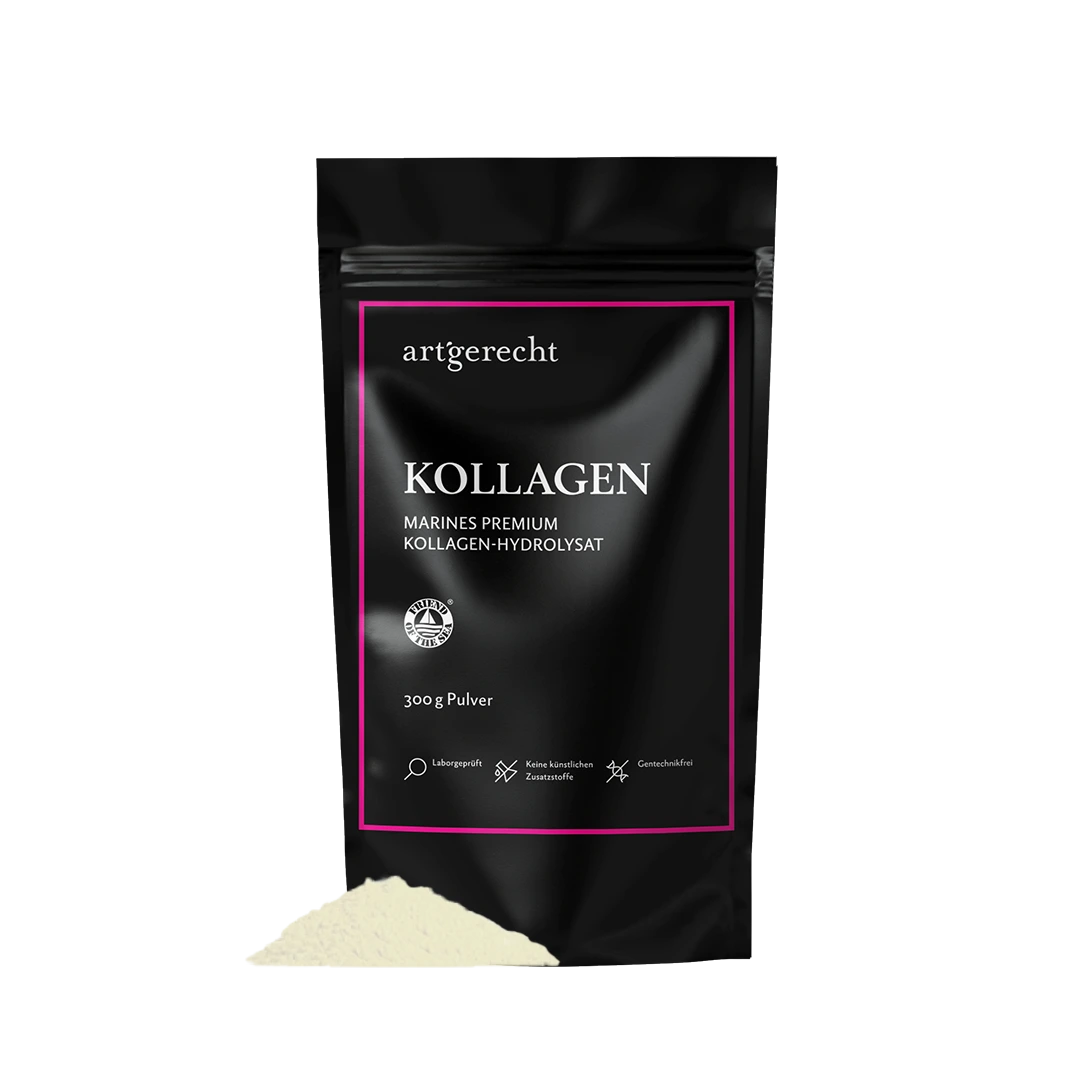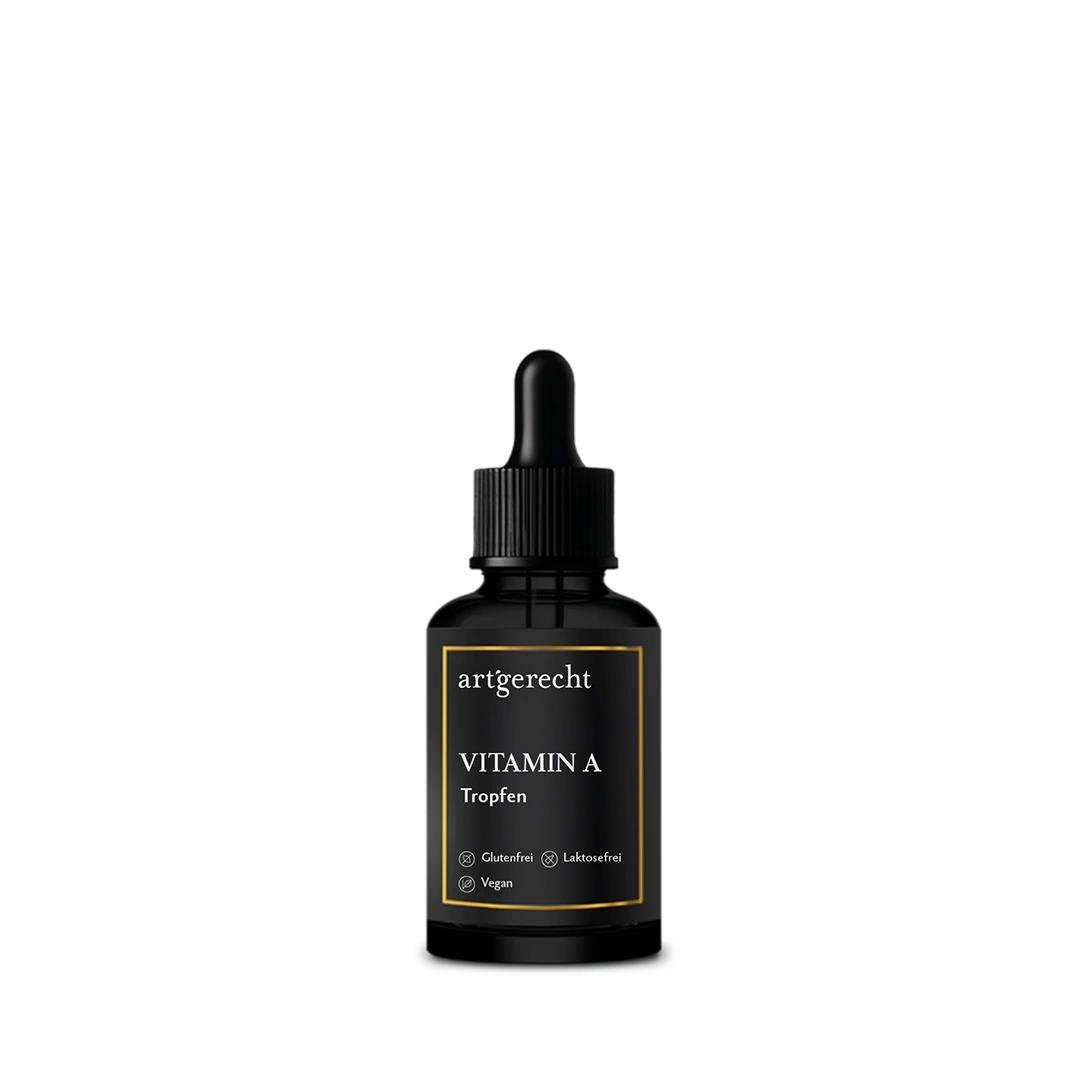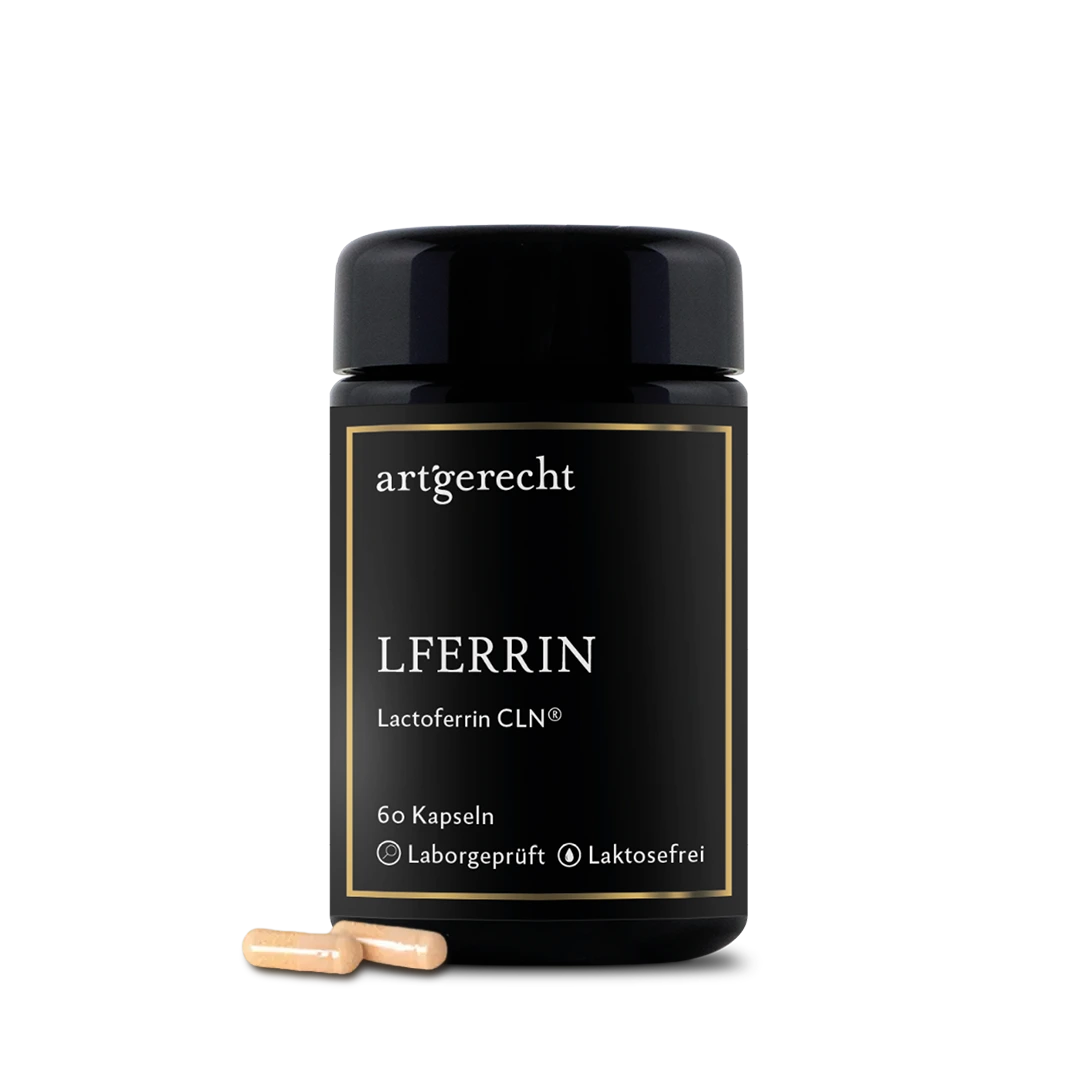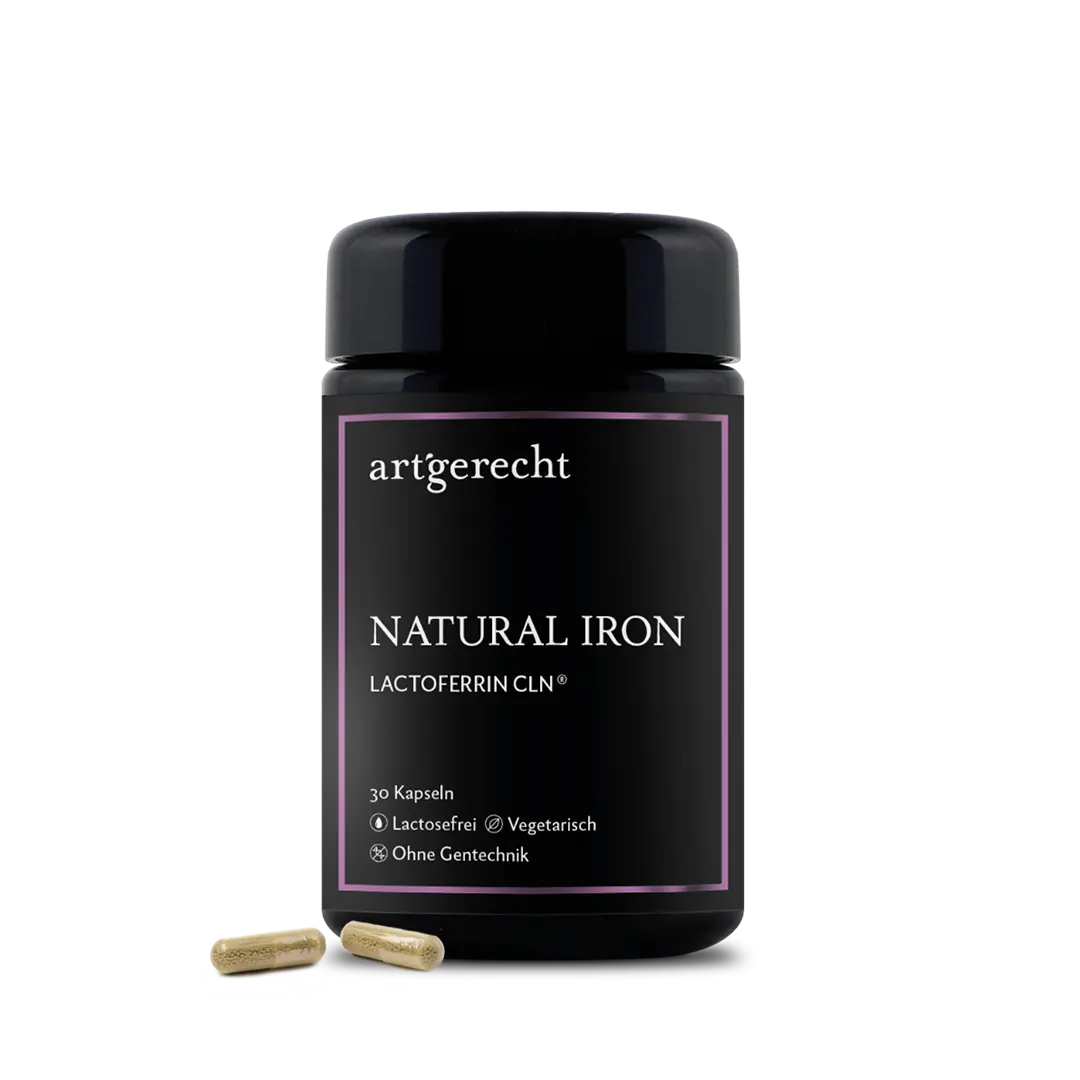-
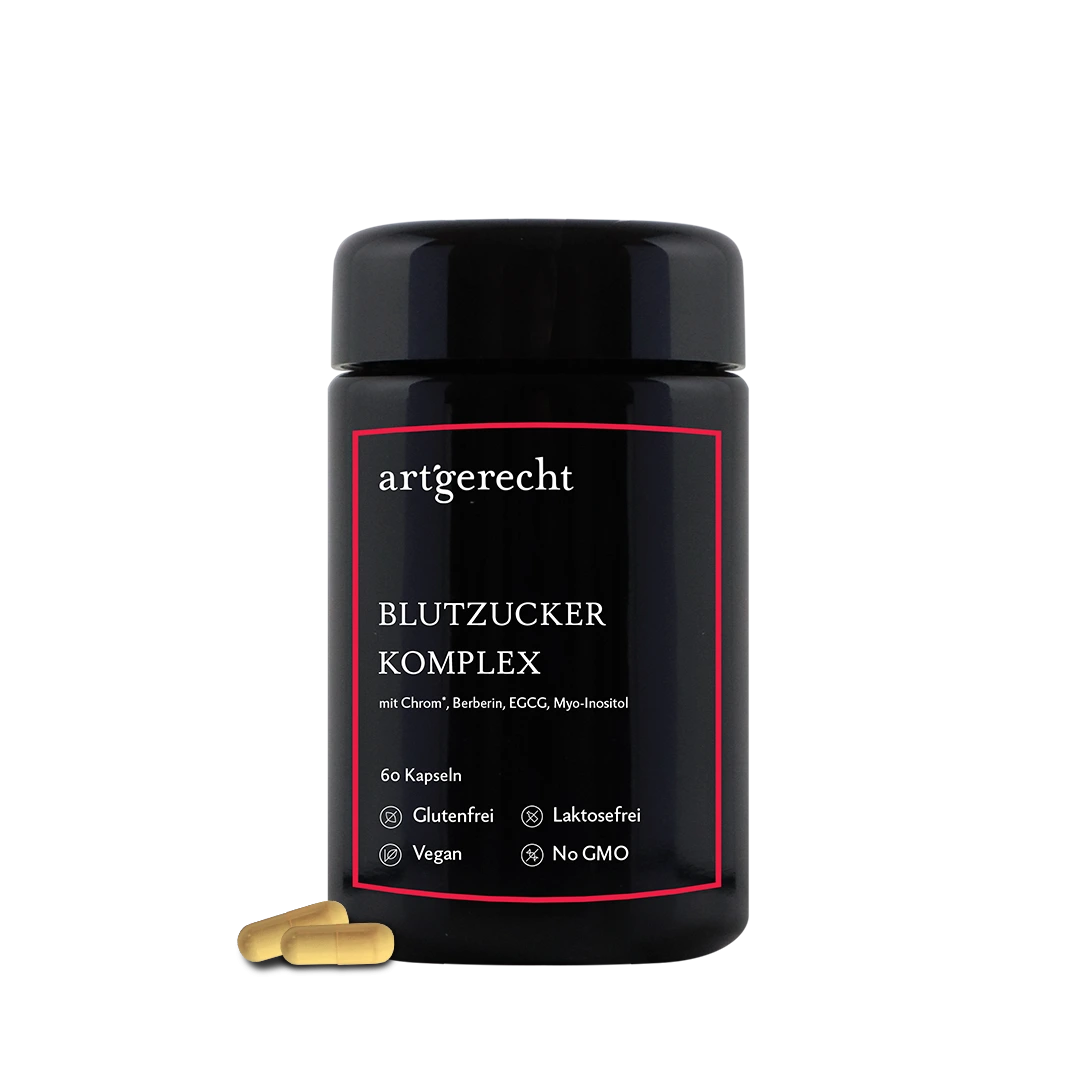 €35.90
€35.90 -
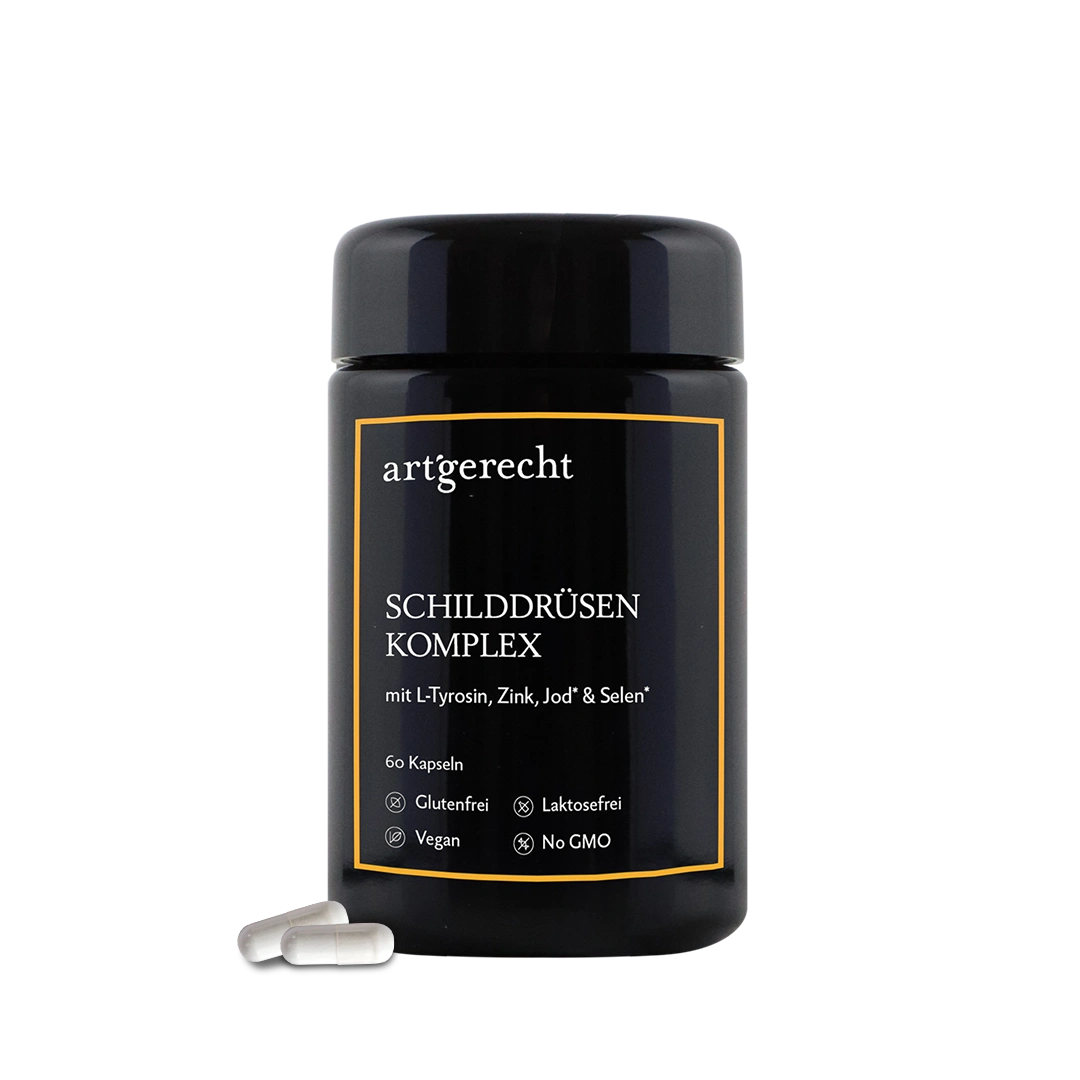 €35.90
€35.90 -
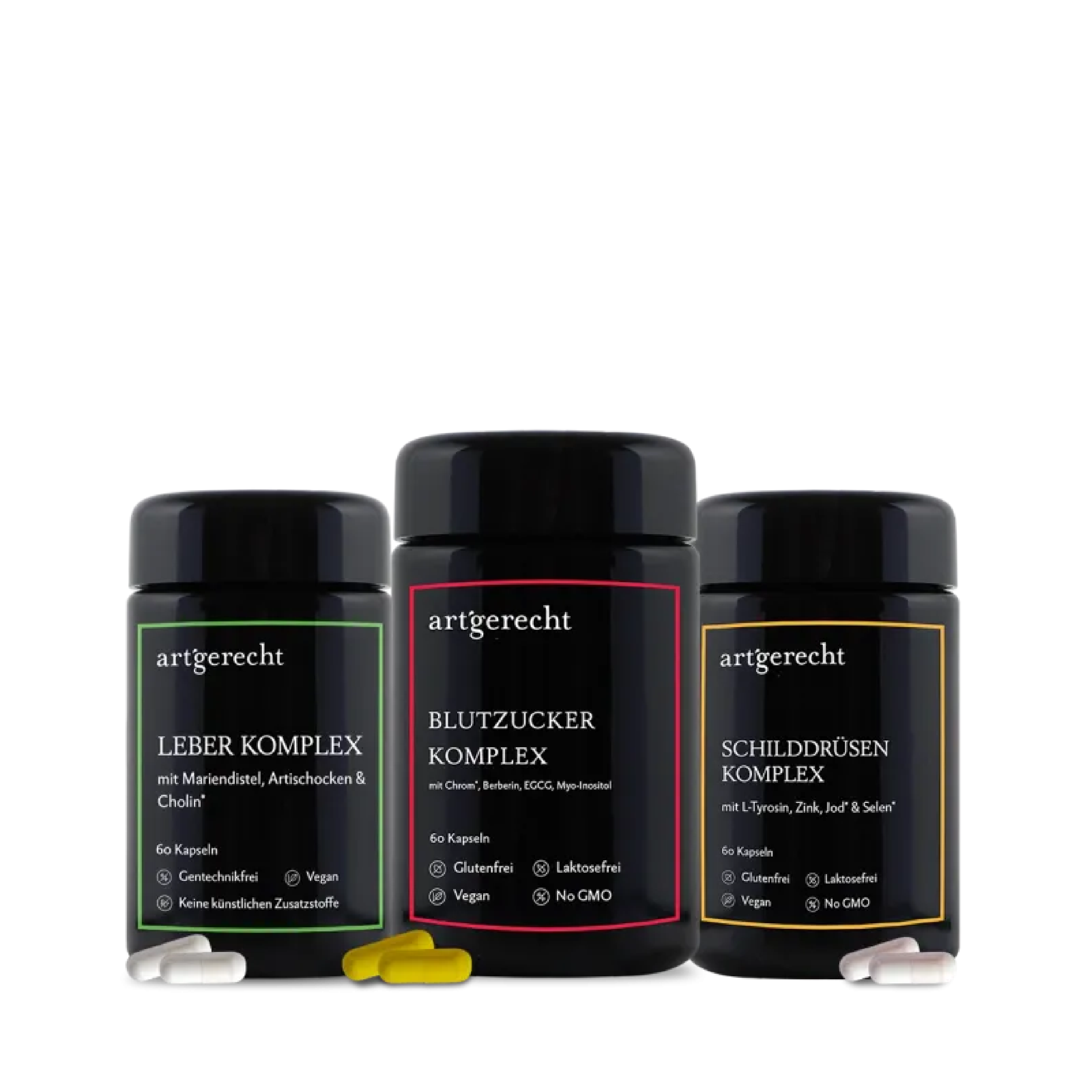 €95.90
€95.90
The bad news first? Unfortunately, there is no miracle cure that guarantees sustainable and healthy weight loss on its own. There is also no diet that leads to success through abstinence. And, by the way, what we call success doesn't just mean losing weight, but above all gaining a better body image and a healthy appearance.
What it's about:
In order to lose weight sustainably, the main thing is to teach the body to burn fat again and use it as an energy source. This works best by reducing the frequency of eating so that there are longer breaks between meals. The best way to do this is to exercise, especially on an empty stomach. This forces the body to use fat instead of blood sugar. Another important aspect is the increase in body temperature through the thermal effect of various natural foods to burn additional calories at rest and give your metabolism a good boost.
Fat = energy?
Let's start with human evolution. For a long time, it was thought that the tendency to be overweight was an evolutionary program to store reserves. This was in case food became scarce, which was quite common among our ancestors. [1] However, if the fat was actually stored for lean times, then overweight people would have to be able to make this fat available to all organs in the form of energy. Unfortunately, as you may have already experienced for yourself, it is the other way round. The ability to burn body fat and convert it into energy (so-called beta-oxidation) decreases with increasing body fat levels and simultaneously increasing insulin production [2]. Due to its evolutionary history, which has long been characterized by food shortages, our body does not seem to be made for a constantly full fridge. He is simply overwhelmed by it. Today, this often leads to errors in the supply and distribution of energy. It can even have a negative impact on the energy supply to the brain or the immune system [3].
The optimal body fat percentage
At this point it should be emphasized that even too little fat cannot be described as healthy. Because when our evolutionary ancestors found themselves in a period of food shortage, body fat was their life insurance.
The difference to today lies firstly in the amount of fat that our ancestors carried with them, because they were certainly not overweight. On the other hand, thanks to an intact stress and energy distribution system, they were able to draw on their reserves and convert them back into energy.
There is no value for the optimal proportion of body fat that is the same for all people, as gender and age should be taken into account here [4]. However, there is not only an upper limit that can be regarded as a risk factor for health, but there is also a lower limit of the physiologically sensible fat percentage, which is approximately five percent for men and ten percent for women. Below this level, health consequences must be expected.
| Köbodyfatanetil in % | woman | man |
| &non-essential fat | 10 – 13% | 2 – 5% |
| Top athletes | 14 – 20% | 6 – 13% |
| athletes | 21 – 24% | 14 – 17% |
| Normal body fat percentage | 25 – 31% | 18 – 24% |
| &overweight | > 32% | > 25% |
Calculation of body fat percentage
You can use the following formula to calculate your approximate body fat percentage yourself to see where you stand.
First, you need your body mass index (BMI), which is calculated as follows:
Body mass in kilograms / body size in m2 = BMI
You can use this to calculate your body fat percentage:
Für women: (1.20 x BMI) + (0.23 x age) – 5.4 = body fat in percent
For men: (1.20 x BMI) + (0.23 x age) – 16.2 = Body fat in percent
If you want to know exactly, we recommend a bio-impedance analysis (BIA). You may be able to have this measured by your doctor or at a medical training center on a specific scale.
Why am I gaining weight at all?
As already mentioned, the higher our body fat percentage, the less able we are to use the stored fat as a source of energy. On the contrary – it becomes more and more, as the metabolism also changes. What's more, our diet has changed, and we often eat industrially processed foods and sugar.
Fuel metabolism: Here begins the change
Most people mainly consume carbohydrates from cereals, potatoes, rice and sugar (especially fructose) as an energy source for their daily metabolism because it is most convenient for them. The body uses this energy in the form of adenosine triphosphate (ATP). The body can obtain 36 ATP from one molecule of carbohydrate and 100 to 150 ATP from one molecule of fat [5]. From this perspective, fatty acids would be a much better source of energy. However, energy production from fat is more complex and consumes around six percent more oxygen, which is why the body prefers to produce energy from short-chain carbohydrates [6]. The more carbohydrates are eaten in the form of sugar, cereals, potatoes, rice, etc., the higher the insulin level in the blood rises and energy production from fat (beta-oxidation) is also inhibited.
However, if we were to use fat for our energy requirements, there would be major advantages:
- Our excess body fat stores are burned, we inevitably reduce our body fat and lose weight.
- Our carbohydrate stores in the liver and muscles are depleted after around 45 minutes due to their small size. The ability to burn fat enables us to perform at a consistently high level for longer, both in sport and in everyday life. This also means that we stay fuller for longer and still fit.
- When fat is burned, the rate of cell division is reduced, triggering a recovery phase in the body. This is physiological anti-ageing. When carbohydrate intake increases insulin and growth factors in the blood, they have the exact opposite effect and cause us to age faster.
Many people's metabolism has chosen simpler but unhealthy metabolic pathways via carbohydrates over the years and decades. The switch to a different fuel, i.e. from carbohydrate metabolism to fat metabolism makesnot only makes us slim, but is also an anti-ageing agent[7]. However, this transition takes between ten days and eight weeks[8], depending on your physical condition. In order for the body to relearn to burn fat from food and its own body fat more efficiently and quickly, our organism must be forced to do so with a low-carbohydrate diet and exercise on an empty stomach in the first few days and weeks.
To speed up the process, you can increase your intake of coconut fat and coconut products, as well as butter and olives.strong>olive oil so that the body becomes accustomed to burning ketones from fat as an alternative energy source to carbohydrates.
Activation of brown fatty tissue
In simple terms, you can think of brown adipose tissue as a kind of oven in which fat is burned to produce heat. Its job is to provide us humans with heat when we are at rest. Almost everyone is a little hypothermic, i.e. too cold, and could do with a little more body temperature. A great side effect is that the production of body heat is very expensive in terms of energy. Just one degree costs an additional 250 to 350 kcal for 24 hours. This is mainly due to the “BAT (Brown Adipose Tissue) cocktail“ – consisting of the aminoäure L-tyrosine, green tea extract, caffeine and chilli – stimulated [9].
The most important tips to lose weight sustainably
Sensible lifestyle changes:
- Food frequency is the most important approach for most people. Two to three meals a day is optimal.
- Once a week, plan a „Fresday“. On this day, consume a particularly large amount of the (optimal) foods.
- Increase the amount of fiber: green vegetables, carrots, etc.
- Reduce carbohydrates and especially starch from potatoes and cereals.
- Save on heating costs! In fact, your own fat burning is boosted at cooler room temperatures (below 21 degrees).
- Take regular cold showers or cold drinks, but also treading water in cold water (bathtub, river or lake) burns additional calories.
- Exercise on an empty stomach (no food intake for at least five hours).
- Short, intensive exercise sessions before meals are an important measure to significantly reduce the inflammatory reaction after eating: Push-ups, sit-ups, pull-ups, dips, squats and climbing stairs. In addition, the body composition (the ratio of fat to muscle) changes.
- Regular walks consume a few extra calories, especially in the form of fat, if you do them regularly.
Interventions for a biological mouth and gut flora: floss daily. Consume lots of fermented cabbage (sauerkraut), root vegetables, snails, mussels and shrimps with a high content of beneficial bacteria.
Support through food
These foods support fat burning and healthy weight loss
- Hot foods such as paprika, chili, ginger, garlic, tabasco, cayenne pepper, wasabi and horseradish reduce body fat.
- Insulin-sensitizing substances such as mango, fish, cinnamon, bitter melon and fenugreek.
- Dark chocolate, cocoa, tropical fruits and green vegetables help to normalize energy levels.
- Activate brown adipose tissue with fish, meat, shellfish, chili, green tea, coffee, black pepper, turmeric, ginger, horseradish, wasabi, broccoli, Brussels sprouts and mint.
- Dark cocoa significantly increases fat burning: swap your coffee for dark cocoa brewed with hot water or add a teaspoon of cocoa.
- Foods containing protein and omega-3 fatty acids (prostacyclin and omega-3) also increase thermogenesis. So consume plenty of fish, poultry, seafood and nuts.
- Use coconut oil and coconut milk in the kitchen. These products serve as energy boosters for our brain and prevent binge eating. They also have a regulating influence on our intestinal flora.
- If you don't buy sweets and other addictive substances in the first place, it's easier to resist them in moments of weakness.
Literature:
- Hales & Barker, 2001
- Baig, Belsare, Watve, & Jog, 2011; Tsatsoulis, Mantzaris, Bellou, & Andrikoula, 2013; Cruz et al, 2013
- Peters & Langemann, 2009; Peters et al, 2007; Peters & Lehnert, 2007
- Jackson et al, 2002
- Voet, Beck-Sickinger, Voet, & Pratt, 2010
- Hütter, Schweickhardt, Piper, & Spieckermann, 1984; Lopaschuk, Ussher, Folmes, Jaswal, & Stanley, 2010
- Swindell, 2011
- Felig, Owen, Wahren, & Cahill, 1969; Owen et al., 1969
- Belza, Frandsen, & Kondrup, 2007
Passende Produkte
-
 €35.90
€35.90 -
 €35.90
€35.90 -
 €95.90
€95.90
Kürzlich hinzugefügte Beiträge
-
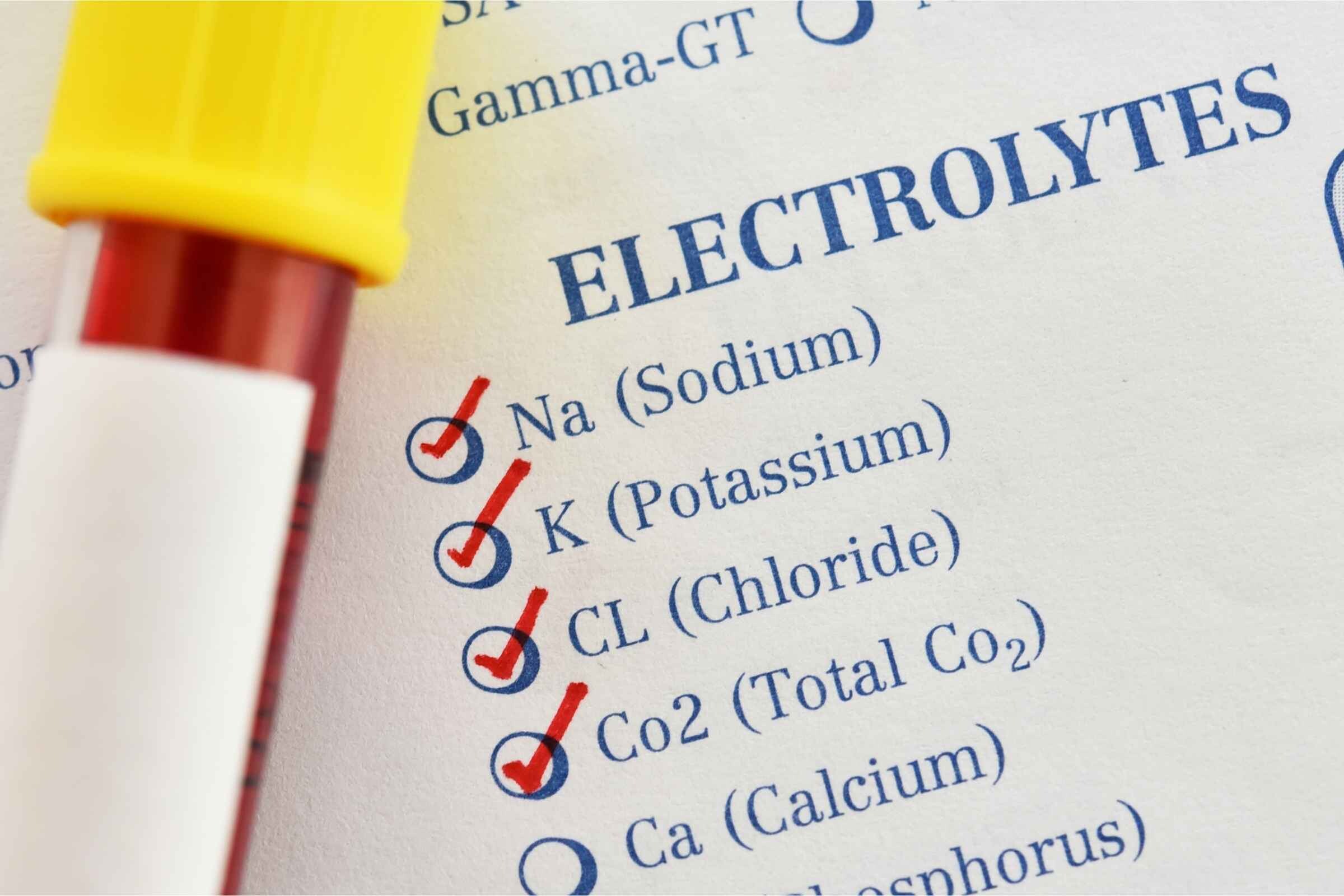 Elektrolyte – Die unsichtbaren Regisseure unseres KörpersElektrolyte steuern lebenswichtige Prozesse wie Muskelarbeit, Nervenfunktion und Flüssigkeitshaushalt. Erfahre, warum sie für Gesundheit und Leistung so entscheidend sind.
Elektrolyte – Die unsichtbaren Regisseure unseres KörpersElektrolyte steuern lebenswichtige Prozesse wie Muskelarbeit, Nervenfunktion und Flüssigkeitshaushalt. Erfahre, warum sie für Gesundheit und Leistung so entscheidend sind. -
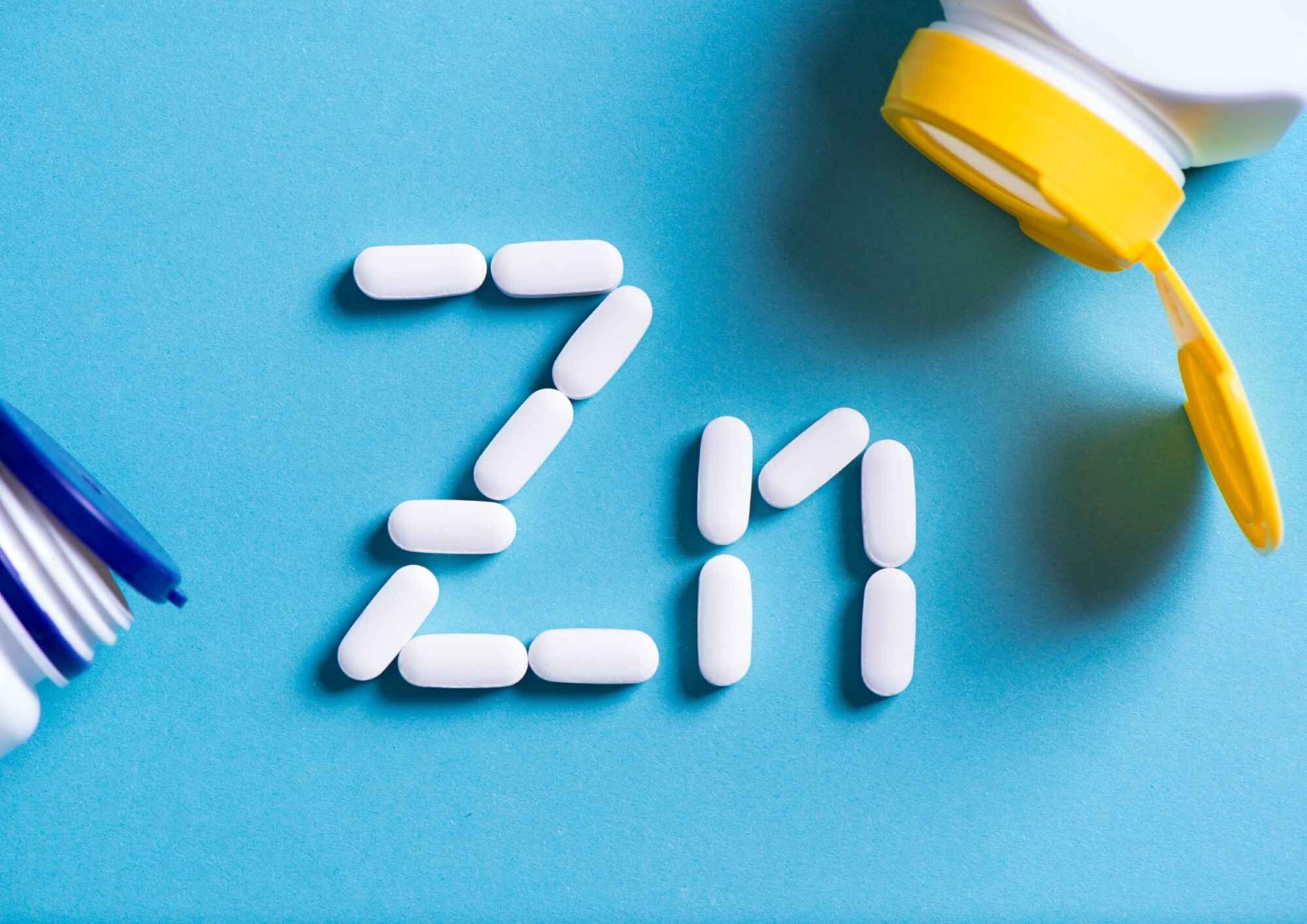 Zink reduziert nachweislich die Krankheitsdauer – Was sagt die Wissenschaft?Zink kann mehr als nur das Immunsystem stärken. Studien zeigen, dass es die Dauer von Erkältungen spürbar verkürzen kann.
Zink reduziert nachweislich die Krankheitsdauer – Was sagt die Wissenschaft?Zink kann mehr als nur das Immunsystem stärken. Studien zeigen, dass es die Dauer von Erkältungen spürbar verkürzen kann. -
 Milk thistle: effect on liver health and detoxificationHow does milk thistle really protect our liver? Find out how silymarin neutralizes free radicals, supports detoxification and what studies say about its effect on fatty liver, hepatitis & co. Find out more now!
Milk thistle: effect on liver health and detoxificationHow does milk thistle really protect our liver? Find out how silymarin neutralizes free radicals, supports detoxification and what studies say about its effect on fatty liver, hepatitis & co. Find out more now! -
 Menopause is not a disease: everything women (and men) should knowHalf of humanity is affected by the menopause. The PRO issue of Health Nerds is all about facts, myths and tips about the menopause.
Menopause is not a disease: everything women (and men) should knowHalf of humanity is affected by the menopause. The PRO issue of Health Nerds is all about facts, myths and tips about the menopause. -
 Allergien und Heuschnupfen – Häufigkeit, Ursachen, Behandlung und PräventionOb Gräser, Pollen oder Hausstaub – Allergien betreffen immer mehr Menschen. Erfahre, warum sie entstehen, welche Therapien helfen und wie Du mit gezielter Vorbeugung die Beschwerden bei Dir oder Deinem Kind langfristig lindern kannst.
Allergien und Heuschnupfen – Häufigkeit, Ursachen, Behandlung und PräventionOb Gräser, Pollen oder Hausstaub – Allergien betreffen immer mehr Menschen. Erfahre, warum sie entstehen, welche Therapien helfen und wie Du mit gezielter Vorbeugung die Beschwerden bei Dir oder Deinem Kind langfristig lindern kannst. -
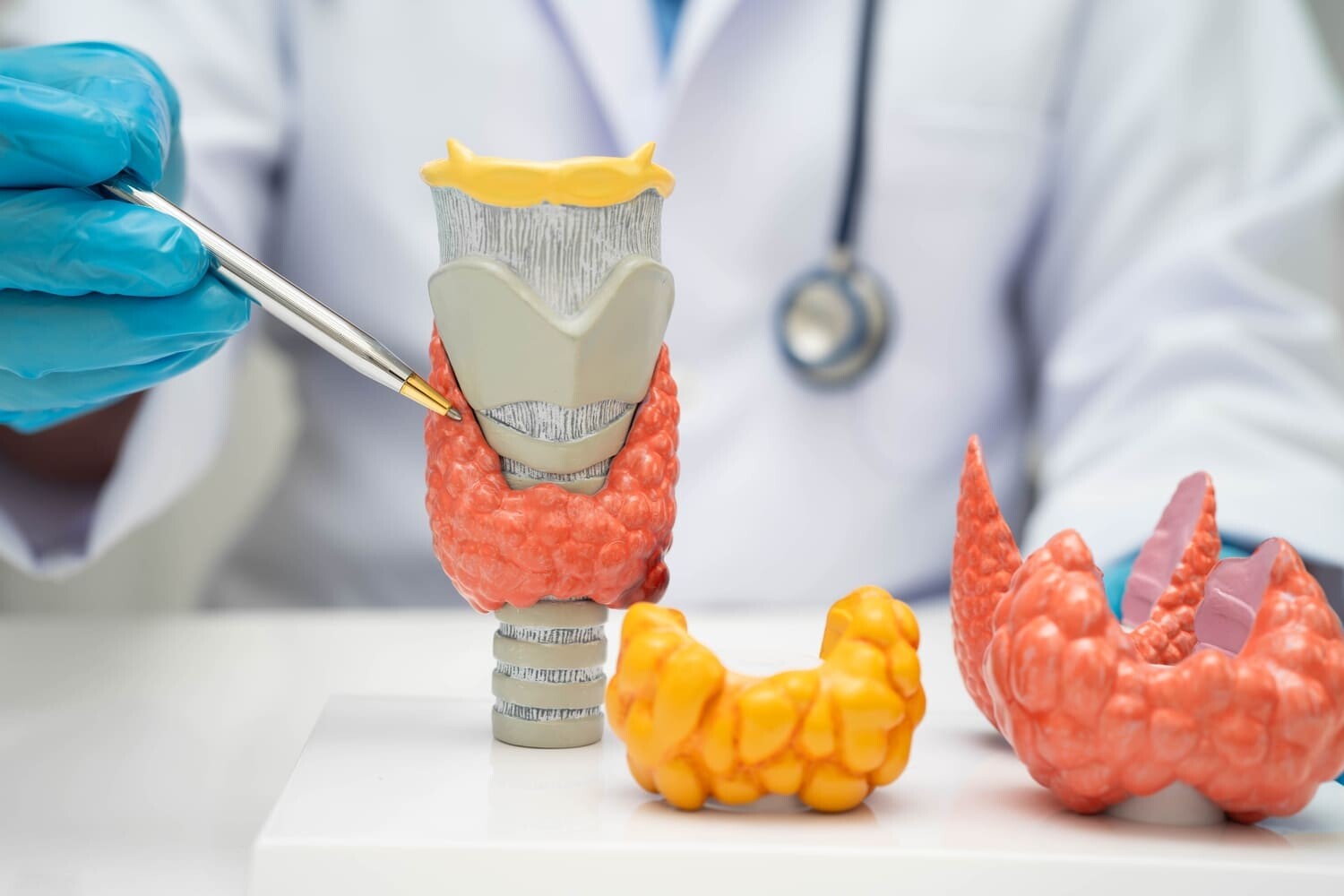 Hypothyreose und Übergewicht – Aktuelle Erkenntnisse und DatenSchilddrüsenunterfunktion verlangsamt den Stoffwechsel und begünstigt Gewichtszunahme. Erfahre Symptome und Tipps zur Unterstützung Deines Körpers.
Hypothyreose und Übergewicht – Aktuelle Erkenntnisse und DatenSchilddrüsenunterfunktion verlangsamt den Stoffwechsel und begünstigt Gewichtszunahme. Erfahre Symptome und Tipps zur Unterstützung Deines Körpers. -
 Elektrolyte – Die unsichtbaren Regisseure unseres KörpersElektrolyte steuern lebenswichtige Prozesse wie Muskelarbeit, Nervenfunktion und Flüssigkeitshaushalt. Erfahre, warum sie für Gesundheit und Leistung so entscheidend sind.
Elektrolyte – Die unsichtbaren Regisseure unseres KörpersElektrolyte steuern lebenswichtige Prozesse wie Muskelarbeit, Nervenfunktion und Flüssigkeitshaushalt. Erfahre, warum sie für Gesundheit und Leistung so entscheidend sind. -
 Zink reduziert nachweislich die Krankheitsdauer – Was sagt die Wissenschaft?Zink kann mehr als nur das Immunsystem stärken. Studien zeigen, dass es die Dauer von Erkältungen spürbar verkürzen kann.
Zink reduziert nachweislich die Krankheitsdauer – Was sagt die Wissenschaft?Zink kann mehr als nur das Immunsystem stärken. Studien zeigen, dass es die Dauer von Erkältungen spürbar verkürzen kann. -
 Milk thistle: effect on liver health and detoxificationHow does milk thistle really protect our liver? Find out how silymarin neutralizes free radicals, supports detoxification and what studies say about its effect on fatty liver, hepatitis & co. Find out more now!
Milk thistle: effect on liver health and detoxificationHow does milk thistle really protect our liver? Find out how silymarin neutralizes free radicals, supports detoxification and what studies say about its effect on fatty liver, hepatitis & co. Find out more now! -
 Menopause is not a disease: everything women (and men) should knowHalf of humanity is affected by the menopause. The PRO issue of Health Nerds is all about facts, myths and tips about the menopause.
Menopause is not a disease: everything women (and men) should knowHalf of humanity is affected by the menopause. The PRO issue of Health Nerds is all about facts, myths and tips about the menopause. -
 Allergien und Heuschnupfen – Häufigkeit, Ursachen, Behandlung und PräventionOb Gräser, Pollen oder Hausstaub – Allergien betreffen immer mehr Menschen. Erfahre, warum sie entstehen, welche Therapien helfen und wie Du mit gezielter Vorbeugung die Beschwerden bei Dir oder Deinem Kind langfristig lindern kannst.
Allergien und Heuschnupfen – Häufigkeit, Ursachen, Behandlung und PräventionOb Gräser, Pollen oder Hausstaub – Allergien betreffen immer mehr Menschen. Erfahre, warum sie entstehen, welche Therapien helfen und wie Du mit gezielter Vorbeugung die Beschwerden bei Dir oder Deinem Kind langfristig lindern kannst. -
 Hypothyreose und Übergewicht – Aktuelle Erkenntnisse und DatenSchilddrüsenunterfunktion verlangsamt den Stoffwechsel und begünstigt Gewichtszunahme. Erfahre Symptome und Tipps zur Unterstützung Deines Körpers.
Hypothyreose und Übergewicht – Aktuelle Erkenntnisse und DatenSchilddrüsenunterfunktion verlangsamt den Stoffwechsel und begünstigt Gewichtszunahme. Erfahre Symptome und Tipps zur Unterstützung Deines Körpers. -
 Elektrolyte – Die unsichtbaren Regisseure unseres KörpersElektrolyte steuern lebenswichtige Prozesse wie Muskelarbeit, Nervenfunktion und Flüssigkeitshaushalt. Erfahre, warum sie für Gesundheit und Leistung so entscheidend sind.
Elektrolyte – Die unsichtbaren Regisseure unseres KörpersElektrolyte steuern lebenswichtige Prozesse wie Muskelarbeit, Nervenfunktion und Flüssigkeitshaushalt. Erfahre, warum sie für Gesundheit und Leistung so entscheidend sind. -
 Zink reduziert nachweislich die Krankheitsdauer – Was sagt die Wissenschaft?Zink kann mehr als nur das Immunsystem stärken. Studien zeigen, dass es die Dauer von Erkältungen spürbar verkürzen kann.
Zink reduziert nachweislich die Krankheitsdauer – Was sagt die Wissenschaft?Zink kann mehr als nur das Immunsystem stärken. Studien zeigen, dass es die Dauer von Erkältungen spürbar verkürzen kann. -
 Milk thistle: effect on liver health and detoxificationHow does milk thistle really protect our liver? Find out how silymarin neutralizes free radicals, supports detoxification and what studies say about its effect on fatty liver, hepatitis & co. Find out more now!
Milk thistle: effect on liver health and detoxificationHow does milk thistle really protect our liver? Find out how silymarin neutralizes free radicals, supports detoxification and what studies say about its effect on fatty liver, hepatitis & co. Find out more now! -
 Menopause is not a disease: everything women (and men) should knowHalf of humanity is affected by the menopause. The PRO issue of Health Nerds is all about facts, myths and tips about the menopause.
Menopause is not a disease: everything women (and men) should knowHalf of humanity is affected by the menopause. The PRO issue of Health Nerds is all about facts, myths and tips about the menopause.
Empfohlene Produkte
Holistic support for bones, joints, muscles & skin
For your well-being – inside and outEssential Vitamin for Eyes, Skin, and Immune System
High-Dose Support for Cells & Immune DefenseFor your universal protection
As one of the most valuable proteins in the body, lactoferrin is a natural component of the immune system.For your iron balance
Specially formulated for your iron balance with plant-based curry leaf iron, Lactoferrin CLN®, and natural Vitamin C from rose hips.Holistic support for bones, joints, muscles & skin
For your well-being – inside and outEssential Vitamin for Eyes, Skin, and Immune System
High-Dose Support for Cells & Immune DefenseFor your universal protection
As one of the most valuable proteins in the body, lactoferrin is a natural component of the immune system.For your iron balance
Specially formulated for your iron balance with plant-based curry leaf iron, Lactoferrin CLN®, and natural Vitamin C from rose hips.Holistic support for bones, joints, muscles & skin
For your well-being – inside and outEssential Vitamin for Eyes, Skin, and Immune System
High-Dose Support for Cells & Immune DefenseFor your universal protection
As one of the most valuable proteins in the body, lactoferrin is a natural component of the immune system.For your iron balance
Specially formulated for your iron balance with plant-based curry leaf iron, Lactoferrin CLN®, and natural Vitamin C from rose hips.Holistic support for bones, joints, muscles & skin
For your well-being – inside and outEssential Vitamin for Eyes, Skin, and Immune System
High-Dose Support for Cells & Immune DefenseFor your universal protection
As one of the most valuable proteins in the body, lactoferrin is a natural component of the immune system.For your iron balance
Specially formulated for your iron balance with plant-based curry leaf iron, Lactoferrin CLN®, and natural Vitamin C from rose hips.

